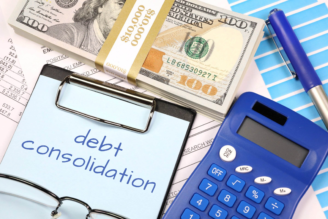Credit utilization rate: learn how to improve it
Discover tips to improve your credit utilization rate and manage your finances effectively. Learn everything!
How to improve credit utilization rate

Imagine you’re driving along a busy road. You want to make the most of the route and not get lost on the detours. In the financial world, credit utilization works in a similar way: the more efficiently you use your credit, the more benefits you can reap in the long run.
If you’re looking for ways to improve your credit utilization rate and achieve better financial health, this guide is for you. Read on for the details!
What is credit utilization rate?
Before we dive into strategies for improving your credit utilization rate, it’s important to understand what it means. The credit utilization rate is the percentage of available credit that you are using.
For example, if you have a total credit limit of $10,000 and are using $3,000, your credit utilization rate would be 30%. Normally, a healthy rate is below 30%, and the lower it is, the better for your credit score.
Why improve your credit utilization rate?
Maintaining a good credit utilization rate can be a determining factor for your financial health. As well as having a positive impact on your credit score, it helps to show that you know how to manage your credit responsibly.
For many consumers in the United States, sites like Credit Karma offer a detailed view of your credit score, helping you to monitor your utilization over time.
Simple tips to improve your credit utilization rate
In principle, there are a few tips that can help you improve your credit utilization. To help you, we’ve listed a few important things that you should always consider. Check them out below!
Pay more than the minimum
One of the easiest ways to reduce your credit utilization rate is to pay more than the minimum amount on your bill. This helps free up more available credit, reducing the utilization percentage. For example, if your limit is $5,000 and you are using $2,000, paying a little more than the minimum can bring this rate down to less than 30%.
Request higher credit limits
If you feel that your utilization rate is too high, considering requesting a limit increase may be a good solution. Remember that each request will be recorded in your credit history, so do it responsibly.
Monitor your credit score regularly
Tools such as Credit Sesame or the aforementioned Credit Karma help you monitor your credit score and propose improvements. By following up regularly, you can identify areas where your utilization can be adjusted.
Avoid using all available credit
Avoiding using your entire available limit is essential. Whenever possible, try to keep your balance below 30% of your total available limit. This demonstrates your ability to manage your finances well and improves your score over time.
Organize your finances with a budgeting tool
Apps such as Mint or YNAB (You Need A Budget) are excellent resources for those seeking closer and more efficient financial control. They help you visualize expenses, set limits and keep track of your credit usage.
Benefits of improving your credit utilization rate
By improving your credit utilization rate, you can enjoy several benefits. A higher credit score opens the door to better interest rates on loans, more advantageous credit cards and more favorable conditions in financial negotiations.
In addition, good credit management promotes a sense of security and more robust financial planning.
Conclusion
Improving your credit utilization rate is an important step for anyone looking to stabilize their financial health. With simple tips and the use of reliable tools, you can track your progress and build a healthier relationship with your credit.
Finally, don’t underestimate the impact that small adjustments can have on your financial future!





